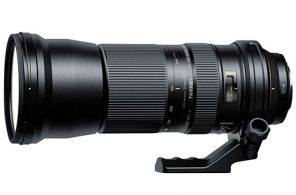 It’s the start of another year, full of possibilities and potential. A good friend of mine recently mentioned that she’s planning to get serious about her photography this year, and I’m sure there’s a lot of people out there who’ve had the same idea. So I thought I’d put together some ideas to help our readers here on the Plug-In blog push their photography further. With a little knowledge, a little persistence and a lot of practice, you might even find yourself making photos worthy of a pro.
It’s the start of another year, full of possibilities and potential. A good friend of mine recently mentioned that she’s planning to get serious about her photography this year, and I’m sure there’s a lot of people out there who’ve had the same idea. So I thought I’d put together some ideas to help our readers here on the Plug-In blog push their photography further. With a little knowledge, a little persistence and a lot of practice, you might even find yourself making photos worthy of a pro.
Get Inspired
The first thing you need to do is get inspired. What is it that you want to shoot? What is it that’s going to get you out that door, camera in hand, determined to come home with a great photo? My aforementioned friend, for example, has three beautiful daughters, and I’m sure she’ll take tonnes of photos of them. She’s also a dog-lover who lives near a forest, which gives her another swath of possibilities. Think about what you have access to, what’s unique to your locality and focus on that.
Build A Portfolio
If you need a goal to aim for, why not try to put together a portfolio of twelve really strong images, one a month, by the end of December next? You could even make a calendar out of them for 2016. If you look at the portfolios of professional photographers, you’ll notice that they’re usually tied together by a single theme, or a unique style, or both. Very few successful photographers show lots of different types of work, because it’s important to be known for doing one thing well. It does take a lot of work to get to this point, but it’s good to know where you’re headed before you start the journey.
Equipment
Before you do start shooting, it’s worth giving some thought to your equipment. Now I’ll be the first to say that you don’t need the very best equipment to make great photos, but if you want them to look professional there are certain minimum requirements. The most important thing in my opinion is the sensor; the bigger the better. I would say you need at the very least something like the Micro Four-Thirds format offered by the Olympus and Panasonic mirrorless cameras. An APS-C sensor is a great option too, and is carried by lots of DSLRs, as well as some mirrorless cameras by Sony, Fujifilm and Samsung. I wrote a piece about sensor size a while back (‘Camera Sensors – Size Matters’) which you should read if you want to know more about the importance of sensor size.
Lenses
 The other minimum requirement for professional-grade photos is a good lens. Now while cameras with good sensors are relatively inexpensive nowadays, good lenses can be eye-wateringly expensive (as my dad likes to say). The good news is that you don’t have to break the bank to get good glass. If your budget is really tight, look at a prime lens. A prime lens is a lens that has no zoom capability. It contains far fewer optical elements than a zoom lens and for this reason the sharpness and overall quality of the image is much higher. You’ll find that some of the cheapest prime lenses are the 50mm f/1.8 lenses made by Canon, Nikon and Sony for their DSLR cameras. And indeed this is one of the advantages of choosing a DSLR over a mirrorless camera; in general the lenses for DSLRs are cheaper.
The other minimum requirement for professional-grade photos is a good lens. Now while cameras with good sensors are relatively inexpensive nowadays, good lenses can be eye-wateringly expensive (as my dad likes to say). The good news is that you don’t have to break the bank to get good glass. If your budget is really tight, look at a prime lens. A prime lens is a lens that has no zoom capability. It contains far fewer optical elements than a zoom lens and for this reason the sharpness and overall quality of the image is much higher. You’ll find that some of the cheapest prime lenses are the 50mm f/1.8 lenses made by Canon, Nikon and Sony for their DSLR cameras. And indeed this is one of the advantages of choosing a DSLR over a mirrorless camera; in general the lenses for DSLRs are cheaper.
There are lots of other lens options out there too. If I could only have one lens I would choose a 50mm f/1.4. My next favourite is my Canon L 70-200mm f/4, one of the best value lenses on the market. And don’t rule out lenses made by third party manufacturers like Tamron and Sigma. They make great lenses, which are often more affordable than those by the big boys.
In terms of equipment that’s it, that’s all you need to start shooting really great photos, a good lens and a decent sensor.
Shoot RAW
The next tip I want to give you is about file format. You’ll want to use a camera that allows you to shoot in raw mode. Most of the time the files we get from our cameras are jpegs. These are a compressed version of the original (raw) file captured by the camera. The advantage of working with raw files is that you have a lot more information to work with in when it comes to post-processing your images. For example, if you under or over expose your image (which happens regularly – you very rarely get it bang on) the raw file will give you a lot more leeway to push and pull your image, i.e. increase or decrease the exposure. Also, it gives you the option to selectively enhance the detail in very dark or very bright areas of the image. You can learn more about raw mode here.
With many cameras you can’t capture raw files in automatic mode, so you might need to step outside your comfort zone and learn more about the other modes on your camera where you get to choose shutter speed, aperture and ISO. If you want to learn more about the manual settings check out this post: ‘Master The Basic Camera Settings And Unleash Your Creativity!’.
Post-production
The last thing I want to talk about today is post-production. Although nowhere near as exciting as actually taking photographs, this is an absolutely essential part of the overall process, and if you want to learn to shoot like a pro, you need to learn to edit like a pro. The first step after you get back from your shooting session is to download your images. A professional will generally back them up immediately, because explaining disc failure to a livid client is every professional’s nightmare. After you download your images you need to do the cull; separate the good from the bad. This can be really time-consuming and one of the key skills you need to learn is how to spot the keepers quickly. After that, well it kind of depends on the style of your images. You may need to retouch them, work on the colours or convert them to black and white, maybe enhance the details – there’s a massive amount of possibilities. My advice is to start with Adobe Lightroom 5, which is a really powerful tool for sorting and editing photos. Then do some research into creating the look you want, and then it’s just a case of practice and persistence.
So we’ve just kind of scratched the surface today, but at the same time there’s lot to think about. Be sure to check in next week when I’ll give you some tips on how to shoot portraits like a pro.
Interested in portrait photography? Read my next article called
How to shoot portraits like a pro




JunaPhotography wrote: EquipmentBefore you do start shooting, it’s worth giving some thought to your equipment. Now I’ll be the first to say that you don’t need the very best equipment to make great photos, but if you want them to look professional there are certain minimum requirements. The most important thing in my opinion is the sensor; the bigger the better. I would say you need at the very least something like the Micro Four-Thirds format offered by the Olympus and Panasonic mirrorless cameras. An APS-C sensor is a great option too, and is carried by lots of DSLRs, as well as some mirrorless cameras by Sony, Fujifilm and Samsung. I wrote a piece about sensor size a while back (‘Camera Sensors – Size Matters’) which you should read if you want to know more about the importance of sensor size. LensesThe other minimum requirement for professional-grade photos is a good lens.In terms of equipment that’s it, that’s all you need to start shooting really great photos, a good lens and a decent sensor. fyi… Full frame sensors are larger than APS-C.http://www.bestbuy.ca/en-CA/product/nikon-nikon-d750-24-3mp-digital-slr-camera-black-body-only-d750-body/10324422.aspxhttp://www.bestbuy.ca/en-CA/product/nikon-nikon-d810-36-3mp-dslr-camera-body-only-nikon-d810-slr/10246752.aspxhttps://www.youtube.com/watch?v=be-95NDZLH4I also like a good tripod for shake free images.
Yes xl, full-frame sensors are bigger than APS-C, and medium format sensors are bigger than full frame.
My point here, however, was to outline the “minimum requirements” for making professional grade photos. And you don’t need a full-frame sensor to take great photos, or a tripod.
Comments are closed.